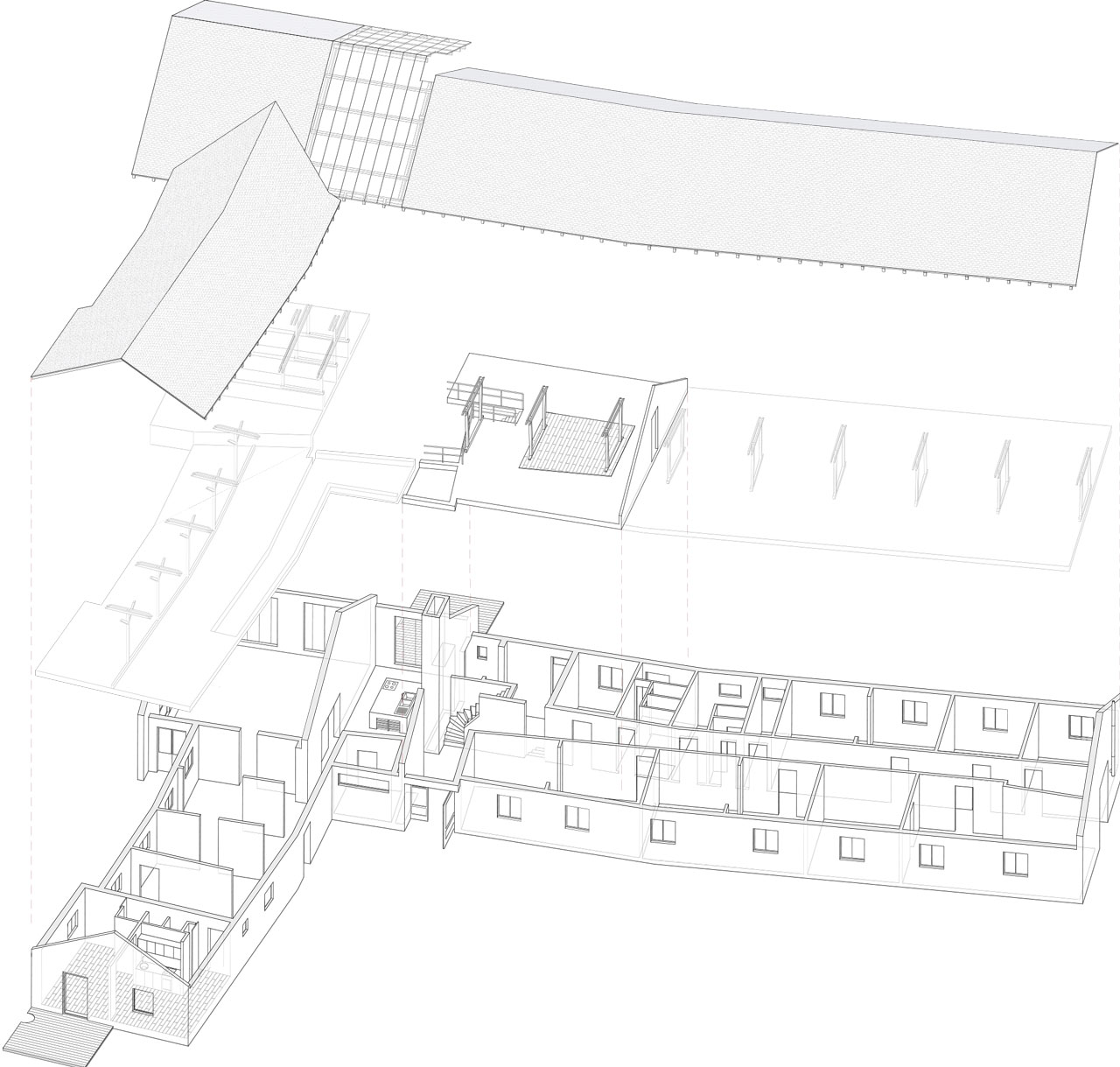How to do things with art. Part I
Having analysed the preconditions of the competition, the UoN team decided to take a step back in order to find out which principal and basic questions are ingrained in the project itself. What was at stake was not to create a specific architectural design from a tabula rasa but to initiate a continuously renewing process that respects the framing conditions as resource. Much later we understood that this had consequences on how we conceptualised design processes. What had happened was a shift from the formula of problem solving to creating what one could call a machine that produces questions and broadens its target mode from matters of fact to matters of concern 1 . In order to conceptually frame the open process that we were about to undertake, we entitled the project University of Neighbourhoods. ‘University’ underpins that we are neither a community centre nor social workers but researchers and students of the urban. The notion ‘neighbourhood’ demonstrates the relational and contextual approach of the project. Having come up with the conceptual framing, we spent one semester simply on putting our prejudices and scopic regimes 2 to zero. Students and staff collaborated in experimenting with teaching formats, undertaking dérives and field research, and methodologically reflecting knowledge production in MTT seminars. A particularly important recognition amongst the many different aspects and forms that resulted from the first semester students’ work was the form of presentation they chose for presenting their proposal: they staged a cooking event they called Kulturküche (culture kitchen). Students stood in front of the jury comprised of professors and project managers, improvised a kitchen with school furniture, portable cooking equipment and their own pans, dishes and cutlery and prepared a meal that was subsequently offered to everybody. They were aware that proposing a process rather than a product would need to be practiced and performed (see Figure 2). Our approach here draws on J.L. Austin’s speech act theory as well as N.K. Denzin’s call for a performative dimension. Based on the argument that concepts and ideas such as housing and dwelling, as well as research and knowledge production have to be actually practiced and performed, the actual doingness aspects of research, learning and teaching in the context of housing were stressed.

The project’s didactic approach centrally worked with the superposition of two logics: the design build strategy of working with students off campus in the context of real building processes and housing/dwelling processes on the one hand and the conceptual curriculum on the other. By building a university of and in the neighbourhood we followed the aim of making practice reflective, and vice versa, reflection active. 7 The clash of these two logics led to broadening each of their central assumptions, and furthermore constituted a new form of theoretical practice. While the concrete motif and territory of the interplay of conceptualizing practice and bringing theory in action was the existing urban situation, the main interest was to develop an understanding and reading of contemporary processes in urban development. The specific mode through which to give this reading a form was a design task in itself. We sought to develop epistemological forms that translate urban processes into education and vice versa. If space, following Lefebvre, is conceived as a relational practice, its production processes and means as well as its meanings and perceptions of it need to be studied in situ. An important reference in that respect was Cedric Price’s project ‘Fun Palace’. Besides the fact that Price worked on his project in an interdisciplinary setting from the start, what constituted a decisive strategic stronghold for the UoN was Price’s basic concept of a building that organises performative modes of education by subtraction and eventually vanishing altogether. 8
- Cf. Bruno Latour, ‘Why has critique run out of steam? From matters of fact to matters of concern,’ Critical Inquiry 30(2), 2004. ↩
- cf. Martin Jay. ‘Scopic regimes of modernity,’ in Vision and Visuality, ed. Hal Foster Seattle, WA: Bay Press, 1988. ↩
- Christopher Dell, Das Urbane: Wohnen. Leben. Produzieren, Berlin: Jovis, 2014, 235. ↩
- Henri Lefebvre, The Urban Revolution. Minneapolis, 2003, 57-58. ↩
- Christopher Dell, Das Urbane: Wohnen. Leben. Produzieren, Berlin: Jovis, 2014, 214. ↩
- Cf. Bernd Kniess, Ben Pohl and Anna Richter, “University of the Neighbourhoods as enabling architecture,” in Agents of Alternatives, ed. Alaistair Fuad-Luke, Anja-Lisa Hirscher and Katharina Moebus Berlin: Agents of Alternatives, 2015, 413, 416. ↩
- Donald Schön, The Reflective Practitioner: How Professionals Think in Action, New York, 1983, 49, 52. ↩
- Cedric Price, Fun Palace, 1964. ↩


